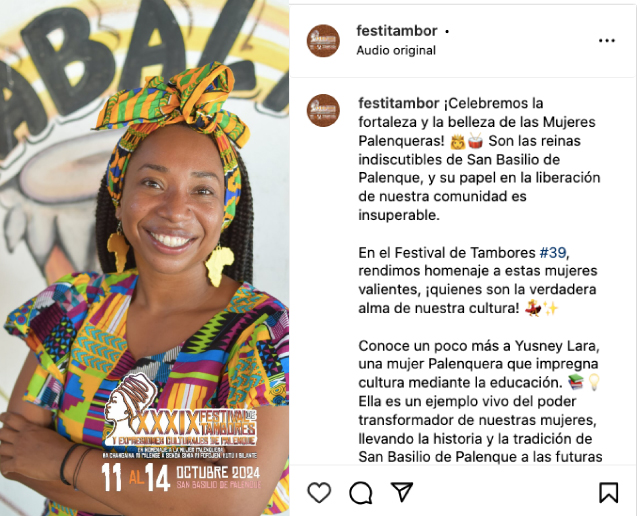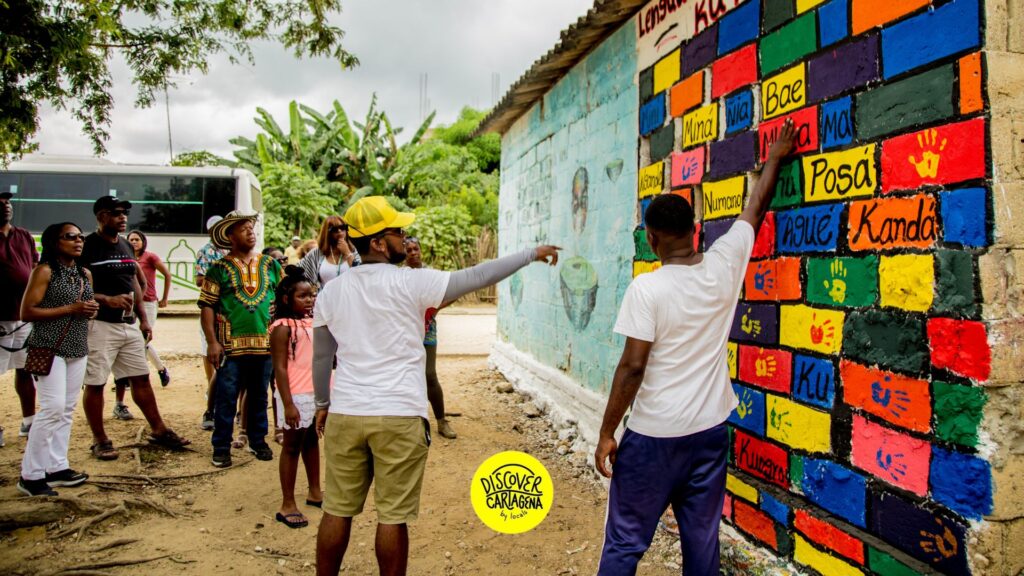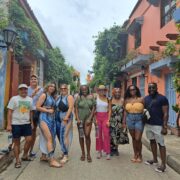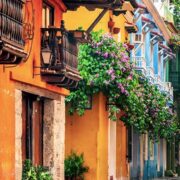
Visit San Basilio de Palenque the first free town in the Americas
Located in the middle of the lush Colombian countryside, just outside Cartagena, lies San Basilio de Palenque, a vibrant community full of history and resilience. Considered the first free town established by enslaved Africans in the Americas. Visit San Basilio de Palenque and discover its magic.
Table of content
- A history of resistance and freedom in Cartagena
- About San Basilio de Palenque foundation
- San BasilIo de Palenque Today
- Special things about San Basilio de Palenque
- Cultural events in San Basilio de Palenque
- Concerns in San Basilio de Palenque
- How to support the community of San Basilio de Palenque.
- Cartagena to San Basilio de Palenque
- Recommendations to visit San Basilio de Palenque
- Is worthy to visit San asilio de Palenque
A history of resistance and freedom in Cartagena
Firstly San Basilio de Palenque is known as the first free town in America. Founded by maroons or cimarrones, as they are called in Spanish (descendants of Africans in the Americas), in the 16th Century during the colonial era. Maroons are known as African slaves who escaped slavery. Additionally, San Basilio de Palenque is considered a symbol of resistance and freedom, as it was the only town that the Spanish were not able to reconquer.
Moreover, San Basilio de Palenque is also a unique combination or blend of Indigenous, Spanish, and African traditions, customs, and influences. In this blog, we will explore the history of these historic people and their legacy in the fight against oppression, as well as the preservation of African culture, language, and gastronomy.
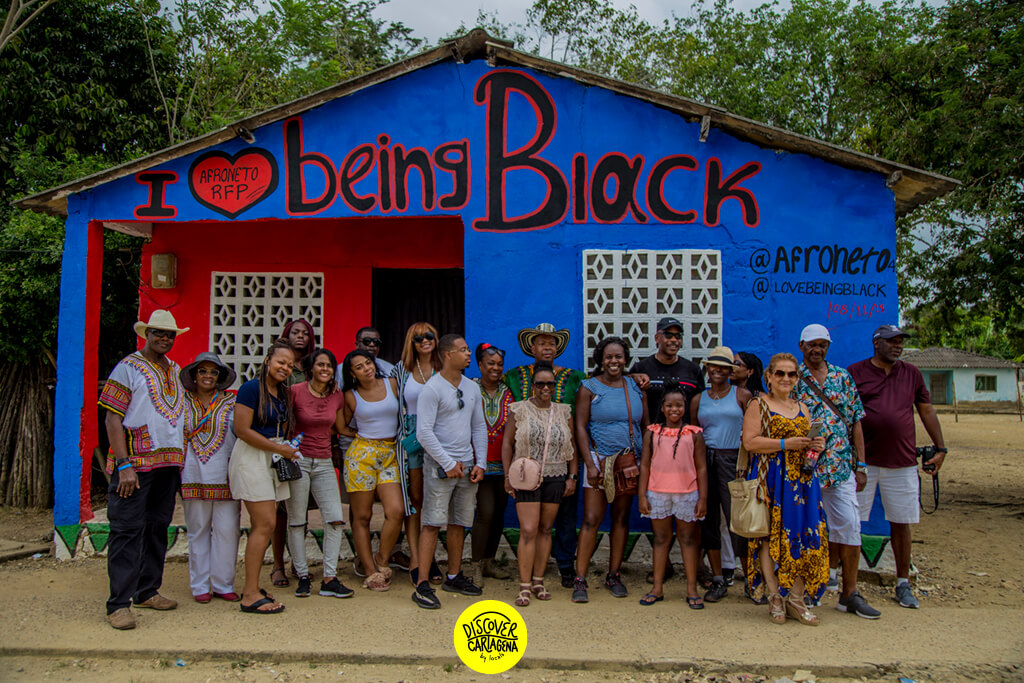
About San Basilio de Palenque foundation
History and origin
The origin of San Basilio de Palenque dates back to the 17th century, specifically in the year 1603, when enslaved Africans (known as maroons or cimarrones) arrived in the Cartagena region. These Africans, predominantly from the Bantu ethnic group, escaped from Cartagena de Indias and settled in the nearby mountains, under the leadership of Benkos Biohó, the leader who managed to cross the way from the slave port of Cartagena and founded San Basilio de Palenque is recognized as the “town of the maroons or cimarrones”.
Consequently, they formed autonomous communities known as palenques, which served as safe havens for runaway slaves. Additionally, these palenques were vital for preserving African culture and traditions in the face of oppression and exploitation.
The journey through the Middle Passage was cruel, full of bad conditions, cruelty and overcrowded ships. To define the cost of the slaves they check the age, the gender and how strong the slave was. Strong women that were able to give birth were of higher value.
Finally, In 1713, San Basilio de Palenque was officially recognized as the first free town in America by the Spanish authorities. This recognition was granted through an agreement known as the “Peace Treaty of Palenque”, in which the rights and autonomy of the Maroon community of San Basilio were established. This historical milestone marked an important precedent in the fight against slavery and colonial oppression in the region.
Futhermore, in 2005 UNESCO declared San Basilio de Palenque a Masterpiece of the Oral Intangible Heritage of Humanity, because their culture and traditions have survived through the years intact. Gastronomy, societal organization, music, language, culture and medicine are unique and really special.
What is Palenque and why San Basilio de Palenque?
The term “palenque” originates from the Spanish word “palo,” meaning “stick.” This refers to the wooden structures used as fortifications by the cimarrones to fend off wild animals. They constructed stockades from surrounding trees to protect their territory.
San Basilio de Palenque, an Afro-descendant community, derives its name from Saint Basilio (San Basilio). During the evangelization process, Palenque adopted Catholic traditions. Consequently, its name was bestowed by the Catholic Church. Legend has it that when a statue of the saint was being transported to a nearby community, it fell and proved difficult to lift. Hence, the community interpreted this event as a divine sign, leading them to name their town San Basilio de Palenque.
About the founder

Benkos Biohó (or Domingo Biohó) remains revered in San Basilio de Palenque. While details of his life may be hazy, he’s celebrated for leadership and courage in guiding his people to freedom. His legacy resonates in the community’s resilient spirit.
Born into a prominent family in Guinea Bissau, he was captured by Spanish and Portuguese colonizers and as a result he was sold as a slave in Cartagena de Indias. In 1599, he escaped, organized an army, and dominated the Montes de Maria. He formed a network to gather information and devise strategies to liberate more slaves.
Unable to defeat the Maroons led by Benkos, Cartagena sought peace, resulting in a treaty on July 18, 1605. The treaty recognized Benkos’ leadership and autonomy. In exchange, palenqueros ceased aiding fleeing slaves and addressing Benkos as king. In 1619, the governor ordered Benkos’ capture, Subsequently leading to his execution on March 16, 1621.
Strategies to scape and found Palenque
Hidden Settlements: Escaping Spanish oppression, slaves hid in jungles near San Basilio de Palenque. They cleverly blended settlements with nature, evading detection and establishing a covert community
Language Defense: Palenqueros crafted Palenquero, a language blending Spanish, Portuguese, French, and African dialects. This shielded communication, allowing resistance organization without colonial interception.
Unity Alliances: Palenqueros formed alliances with indigenous and maroon communities, bolstering defenses, trade, and mutual aid.
Hairstyle Maps: Rather than physical maps, fugitive slaves encoded geographic data into hairstyles, creating “living maps” to guide them to palenque.
Visit San Basilio de Palenque and discover its authenticity
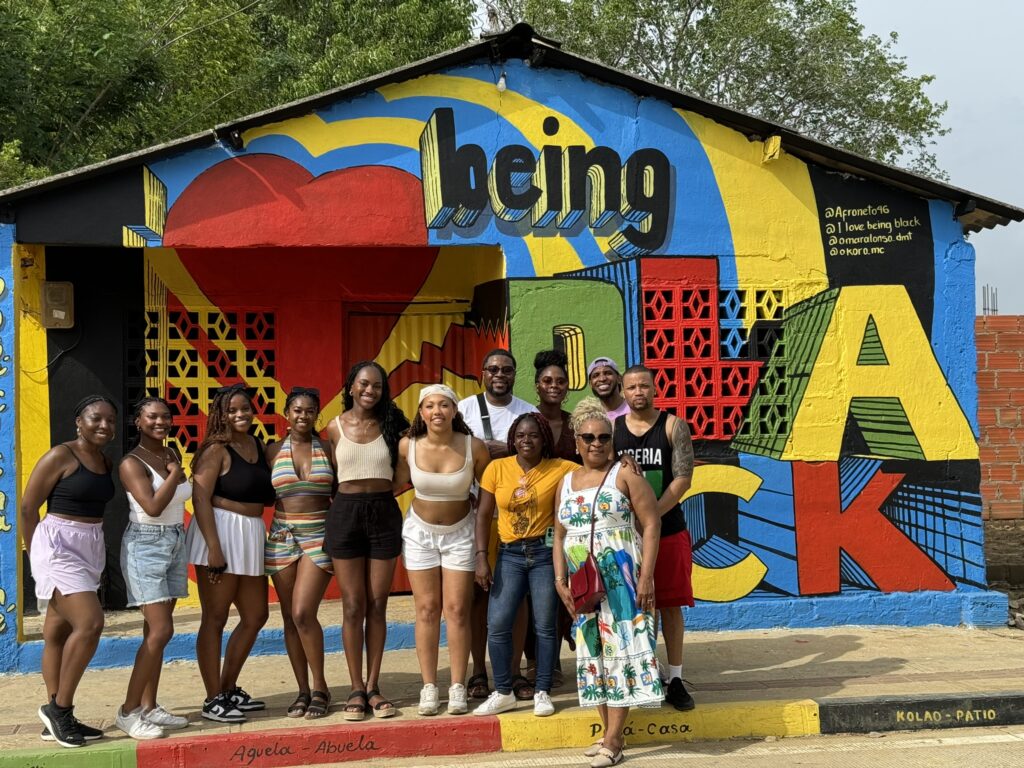

Today, San Basilio de Palenque thrives as a vibrant community of approximately 4,500 inhabitants. They have preserved their unique cultural heritage and the evidence is in their language, music, and traditions. As a result The town was declared a UNESCO Masterpiece of the Oral Intangible Heritage of Humanity in 2005, solidifying its global significance.
Special things about San Basilio de Palenque


Traditional Medicine
Beyond its history, San Basilio de Palenque has unique traditions. One notable aspect is traditional medicine. Maroons used various strategies to survive and establish their community. Their knowledge of medicinal herbs proved crucial. Identifying and using these herbs helped them heal wounds and treat mosquito bites. They also used them to counteract snake bites and other dangers. For 400 years, the town has preserved its traditional medicine knowledge.
This knowledge combats diseases such as cholesterol, diabetes, and fertility issues. Remarkably, San Basilio de Palenque reported no cases of COVID-19. They attribute this to a herbal tea made from various herbs. The town remains dedicated to these traditions. They pass on the power of traditional medicine and prayers to new generations.
Funeral Rituals
Another unique tradition is the Lumbalú funeral ritual. This ritual begins on the night the deceased person is buried. It includes songs and dances. The drum plays a crucial role, guiding the soul of the deceased to the afterlife. Lumbalú lasts for nine nights, symbolizing nine months of gestation. The funeral purifies the soul and guides it back to Africa.
The community does not perform Lumbalú for children. They consider children pure souls who do not need purification. In Palenquera tradition, they do not cry for infants. Crying would prevent infants from resting in peace. The cry, known as leco, is an expression of pain. It comes from the belly and simulates a turkey’s sound. The cemetery in Palenque sits at the town’s entrance. They believe the souls of the deceased protect the community from strangers.
Justice
San Basilio de Palenque relies on maroon guards instead of a police force. This group of elders maintains respect and order. They enforce the town’s principles, eliminating the need for police.
Social Organization
The Palenquera community divides itself into kuagros, groups of people of the same age. These groups provide lifelong support to one another. Palenqueros build their houses with their peers’ help. They work together in the fields for mutual benefit. Kuagros play a significant role in funerals. They offer emotional and financial support to those who have lost a loved one. Polygamy remains accepted in Palenque. A man can have different homes.
Gastronomy
Palenquera cuisine results from centuries of African, indigenous, and Spanish influences. The dishes combine native ingredients with African cooking techniques. These techniques were adapted to the environment and available resources. Emblematic ingredients include plantains, yuca (cassava), corn, fish, and coconut. A variety of spices and aromatic herbs also feature prominently.
These basic ingredients create flavorful and comforting dishes. Palenquera cuisine has gained international renown. It won the best cookbook award at the Gourmand World Cookbook Awards in 2014.
Boxing
Boxing in Palenque has been passed down for generations. It is an integral part of Afro-Colombian culture. For centuries, it served as a form of physical and emotional expression. Boxing in Palenque functions as a sport and a form of resistance. During colonial times, African slaves practiced fighting techniques. They defended themselves against oppressors.
These skills evolved into Palenque’s pugilistic culture. Several Palenquero boxers achieved national and international recognition. Their success increased the visibility of boxing in Palenque. Antonio Cervante Reyes, known as Kid Pambele, stands out. He fought 106 fights, winning 91 (45 by knockout), losing 12, and drawing 3. He won two world titles: the first in 1972, and the second in 1977. Antonio Cervantes Kid Pambele was the first Colombian to win a world championship.
Cultural events in San Basilio de Palenque
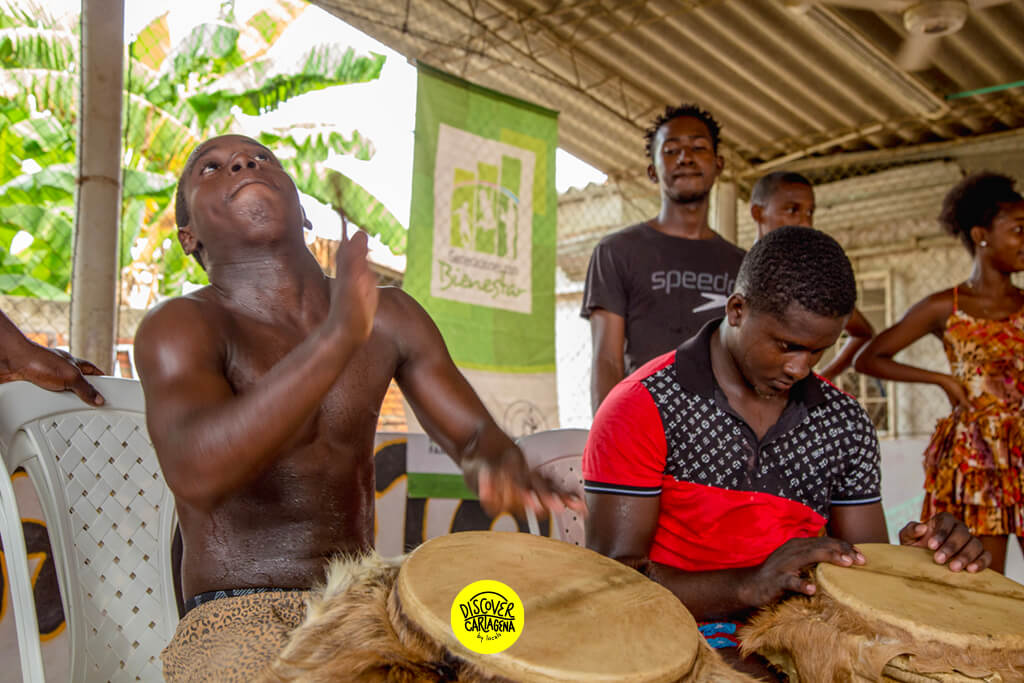
- Visit San Basilio de Palenque and enjoy the drum festival (Festival de Tambores y Expresiones Culturales de San Basilio de Palenque) since 1985:
Annually in October, the Festival of Drums and Cultural Expressions of San Basilio de Palenque celebrates Palenquero heritage, blending African and Colombian traditions deeply rooted in the community’s soul.
This grand festival pays homage to the drum, the heartbeat of Palenquero culture, whose rhythmic beats summon the community to join in the festivities. Passed down through generations, these drums carry stories, struggles, and triumphs.
Beyond drums, the festival showcases a vibrant tapestry of cultural expressions, from colorful traditional dance groups to the melodies of Palenquero music. Musicians strum guitars, blow flutes, and beat drums, creating a symphony that resonates deeply.
No celebration is complete without food; the aroma of traditional Palenquero cuisine fills the air, enticing visitors to savor the unique flavors of this culinary heritage
How to support the community of San Basilio de Palenque.
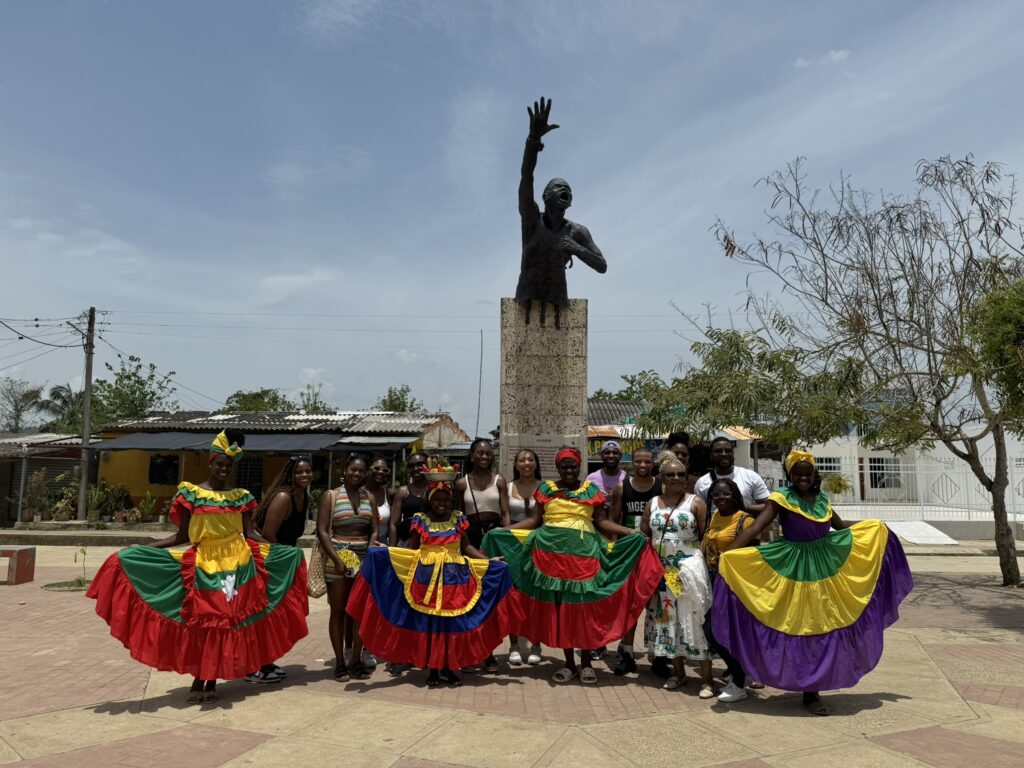

When Travelers visit San Basilio de Palenque, they can play a role in supporting the community by:
- Choosing responsible tourism: Opt for tours led by locals and that prioritize cultural sensitivity.
- Supporting local businesses: Purchase handcrafted souvenirs and enjoy meals at family-run restaurants.
- Spreading awareness: Share your experiences and raise awareness about the importance of preserving San Basilio de Palenque’s unique heritage.
- Taking care of your staff and depositing the waste at the right place.
Is worthy to visit San Basilio de Palenque?
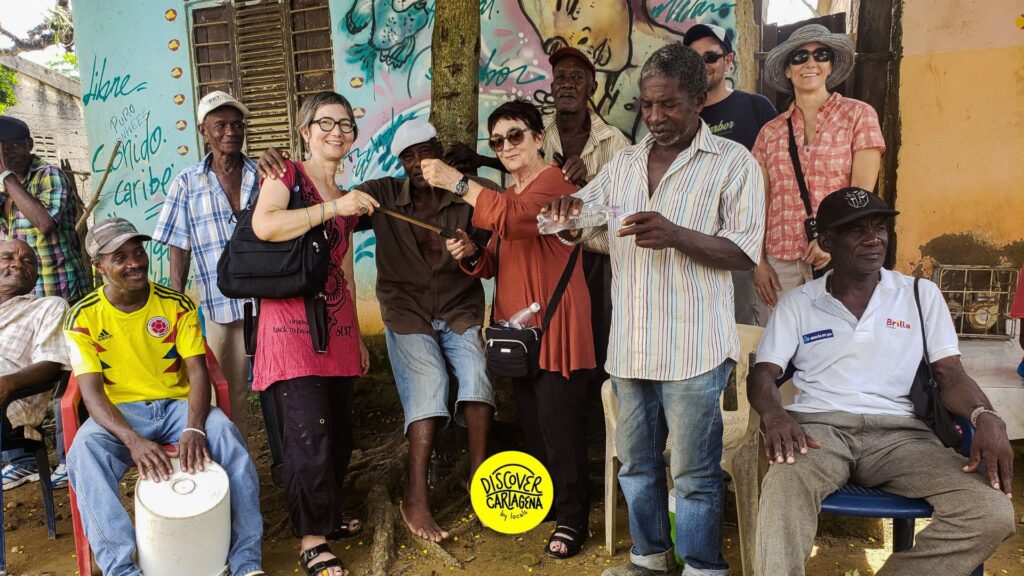

Absolutely! San Basilio de Palenque offers a unique opportunity to experience a living testament to human resilience and cultural preservation. It’s a place where history comes alive, and visitors can gain a deeper understanding of Afro-Colombian heritage.We invite you to visit San Basilio de Palenque and discover its magic but yourself.
The AUTHENTIC CARTAGENA PALENQUE TOUR EXPERIENCE!
